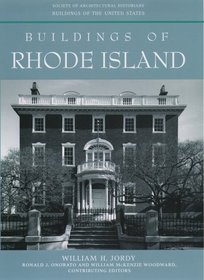Search -
Buildings of Rhode Island (Buildings of the United States)
Buildings of Rhode Island - Buildings of the United States
Author:
Rhode Island is the smallest state in the union: slightly more than 1,200 square miles, 14 percent of which is taken up by the waters of Narragansett Bay. Yet this tiny enclave contains one of the richest concentrations of important historical architecture to be found anywhere in the United States. — Buildings of Rhode Island, the ninth ... more »
Author:
Rhode Island is the smallest state in the union: slightly more than 1,200 square miles, 14 percent of which is taken up by the waters of Narragansett Bay. Yet this tiny enclave contains one of the richest concentrations of important historical architecture to be found anywhere in the United States. — Buildings of Rhode Island, the ninth ... more »
ISBN-13: 9780195061475
ISBN-10: 0195061470
Publication Date: 4/8/2004
Pages: 736
Rating: ?
ISBN-10: 0195061470
Publication Date: 4/8/2004
Pages: 736
Rating: ?
0 stars, based on 0 rating
Publisher: Oxford University Press
Book Type: Hardcover
Members Wishing: 1
Reviews: Amazon | Write a Review
Book Type: Hardcover
Members Wishing: 1
Reviews: Amazon | Write a Review
Genres:
- History >> Americas >> United States >> State & Local
- Travel >> United States >> States >> Rhode Island >> General
- Engineering & Transportation >> Architecture >> Criticism
- Engineering & Transportation >> Architecture >> General
- Engineering & Transportation >> Architecture >> History




